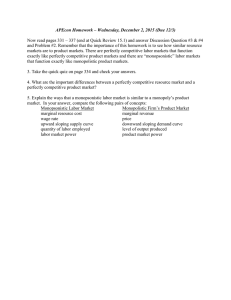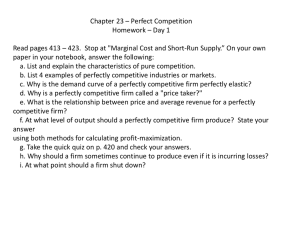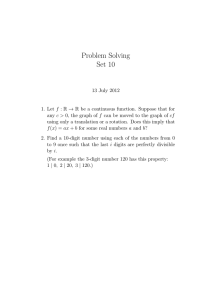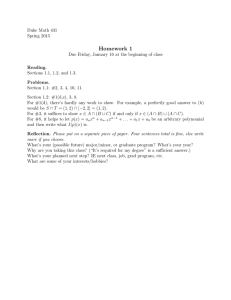APEcon Homework: 10/28/15
advertisement
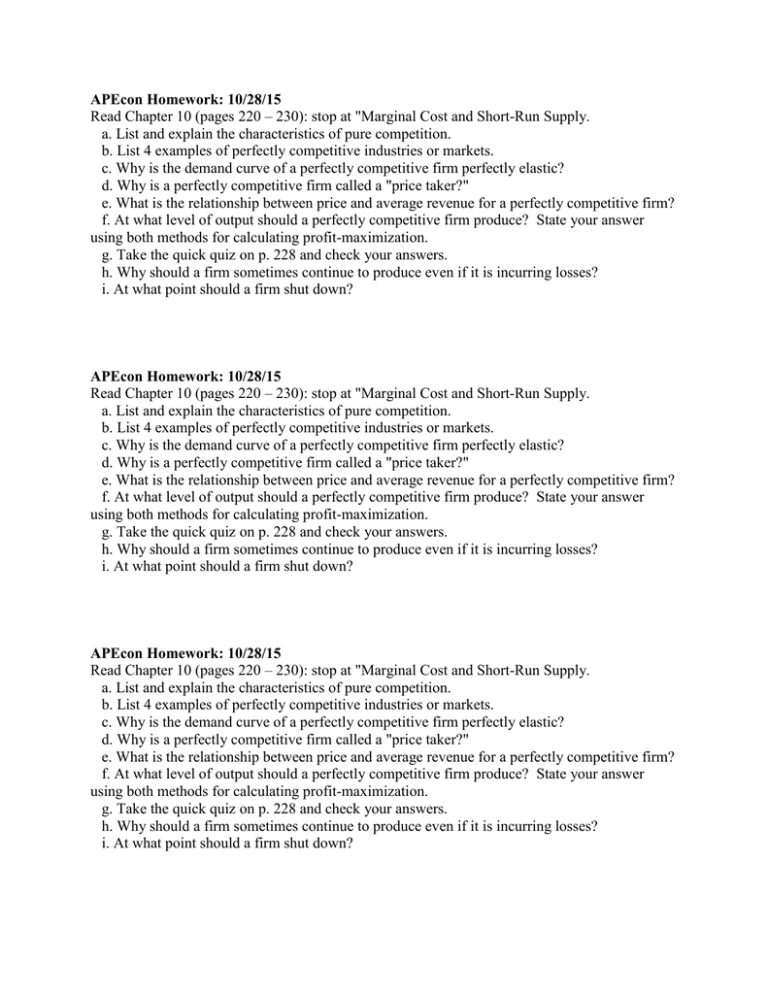
APEcon Homework: 10/28/15 Read Chapter 10 (pages 220 – 230): stop at "Marginal Cost and Short-Run Supply. a. List and explain the characteristics of pure competition. b. List 4 examples of perfectly competitive industries or markets. c. Why is the demand curve of a perfectly competitive firm perfectly elastic? d. Why is a perfectly competitive firm called a "price taker?" e. What is the relationship between price and average revenue for a perfectly competitive firm? f. At what level of output should a perfectly competitive firm produce? State your answer using both methods for calculating profit-maximization. g. Take the quick quiz on p. 228 and check your answers. h. Why should a firm sometimes continue to produce even if it is incurring losses? i. At what point should a firm shut down? APEcon Homework: 10/28/15 Read Chapter 10 (pages 220 – 230): stop at "Marginal Cost and Short-Run Supply. a. List and explain the characteristics of pure competition. b. List 4 examples of perfectly competitive industries or markets. c. Why is the demand curve of a perfectly competitive firm perfectly elastic? d. Why is a perfectly competitive firm called a "price taker?" e. What is the relationship between price and average revenue for a perfectly competitive firm? f. At what level of output should a perfectly competitive firm produce? State your answer using both methods for calculating profit-maximization. g. Take the quick quiz on p. 228 and check your answers. h. Why should a firm sometimes continue to produce even if it is incurring losses? i. At what point should a firm shut down? APEcon Homework: 10/28/15 Read Chapter 10 (pages 220 – 230): stop at "Marginal Cost and Short-Run Supply. a. List and explain the characteristics of pure competition. b. List 4 examples of perfectly competitive industries or markets. c. Why is the demand curve of a perfectly competitive firm perfectly elastic? d. Why is a perfectly competitive firm called a "price taker?" e. What is the relationship between price and average revenue for a perfectly competitive firm? f. At what level of output should a perfectly competitive firm produce? State your answer using both methods for calculating profit-maximization. g. Take the quick quiz on p. 228 and check your answers. h. Why should a firm sometimes continue to produce even if it is incurring losses? i. At what point should a firm shut down?


